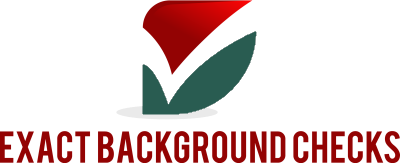4 Panel Drug Screening: Benefits, Applications, and Compliance
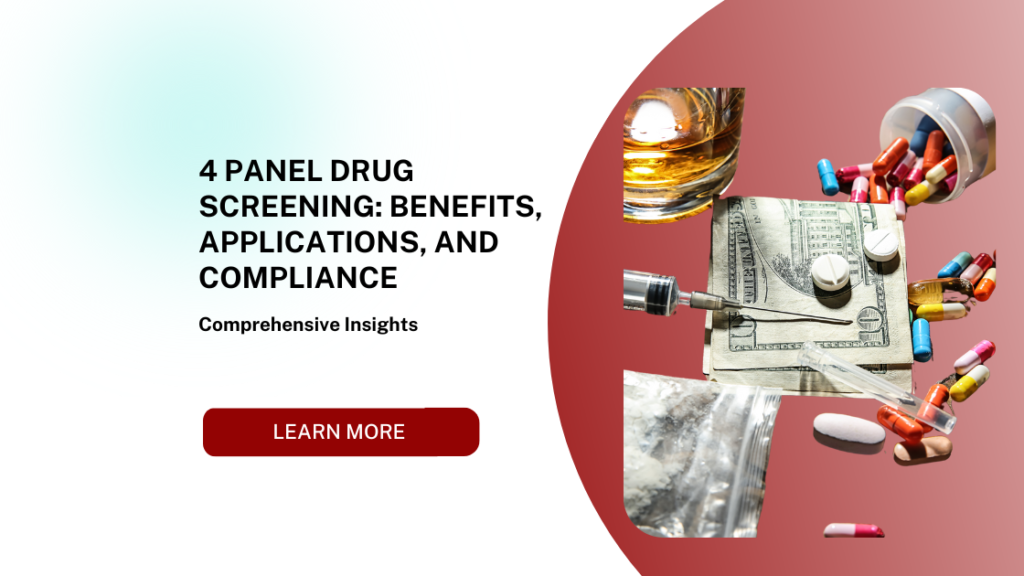
What is a 4 Panel Drug Screening and How Does It Work?
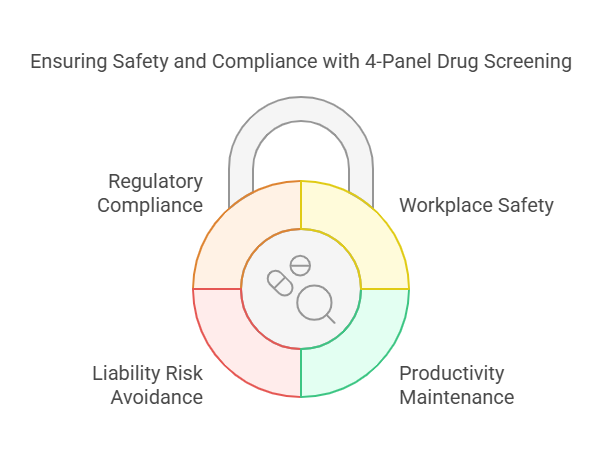
Introduction to Drug Screening
Drug screening has become an essential practice in many industries, particularly in the workplace. Employers use drug tests to ensure safety, maintain productivity, and avoid liability risks. Drug testing helps businesses identify and manage employees who might be impaired by substances, thereby preventing accidents, reducing absenteeism, and protecting the organization’s reputation.
Drug screenings are also mandated by certain industry regulations, especially in fields like transportation, healthcare, and construction, where safety is a top priority. Among the most common drug tests used for workplace screening is the 4-panel drug screening, which is designed to detect a limited number of substances but still serves as a crucial tool for employers.
What is a 4 Panel Drug Screening?
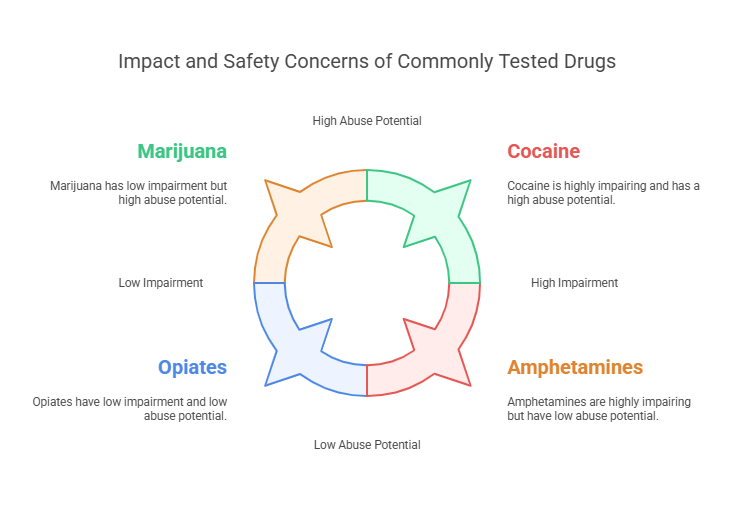
A 4-panel drug screening is a drug test that screens for four specific substances: marijuana, cocaine, amphetamines, and opiates. These drugs are commonly tested for because they are often abused, can impair work performance, and may lead to accidents or other safety concerns in the workplace.
Drugs Tested in a 4-Panel Drug Test:
- Marijuana (THC): Although marijuana is legal in some areas, it can still impair judgment, motor skills, and reaction times, making it a safety concern for many employers.
- Cocaine: Cocaine is a stimulant that can cause erratic behavior, anxiety, and other symptoms that negatively affect performance in safety-sensitive positions.
- Amphetamines: Amphetamines, which include drugs like methamphetamine and prescription stimulants, can cause heightened alertness, but also restlessness, increased aggression, and other side effects that may compromise an employee’s effectiveness and safety.
- Opiates: Opiates, such as heroin and prescription painkillers, are commonly abused substances. They can cause drowsiness, confusion, and difficulty concentrating, which can affect productivity and safety in the workplace.
How 4 Panel Drug Testing Works
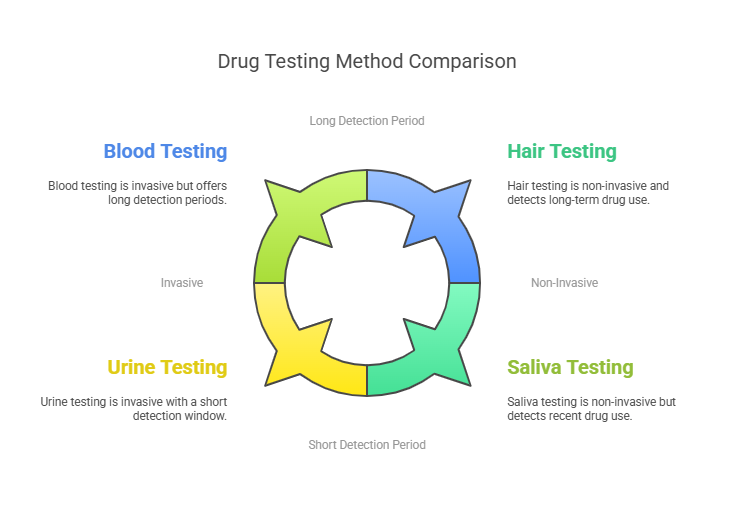
The process for conducting a 4-panel drug test is straightforward and involves the collection of a biological sample from the individual being tested. The most common types of samples used in 4-panel drug tests are urine, saliva, hair, or blood.
Steps in the 4-Panel Drug Testing Process:
- Sample Collection:
- Urine: The most common method, urine tests are easy to administer and cost-effective. The individual provides a urine sample in a controlled environment.
- Saliva: Saliva tests are less invasive and can detect recent drug use, but are less commonly used for 4-panel screenings.
- Hair: Hair tests can detect drug use over a longer period, typically up to 90 days.
- Blood: Blood testing is the most accurate but also the most invasive and costly. It is less commonly used for 4-panel screenings.
- Sample Analysis: After collection, the sample is sent to a laboratory or tested on-site using immunoassay techniques, which look for the presence of specific drugs and their metabolites. If the initial test is positive, a confirmatory test, often using gas chromatography-mass spectrometry (GC-MS), is conducted for more accuracy.
- Result Delivery: Results are typically available within a few days, depending on the testing method. Some tests, like urine or saliva, may provide results more quickly, while hair tests may take longer.
Why Employers Choose 4 Panel Drug Screening
Employers choose the 4-panel drug screening for several reasons, particularly because it strikes a balance between thoroughness and cost-effectiveness. Unlike broader drug panels, such as 10-panel tests, the 4-panel test provides a targeted analysis that covers the most commonly abused substances in the workplace. This makes it an affordable option for many employers, especially those who need to conduct regular screenings for a large number of employees.
Some reasons employers prefer the 4-panel drug screening include:
- Cost Efficiency: Testing for fewer substances reduces testing costs.
- Commonly Abused Substances: The drugs screened in a 4-panel test are among the most commonly abused substances in the workplace.
- Quick Results: These tests offer relatively fast turnaround times, allowing employers to make timely decisions about employee fitness for duty.
Benefits and Limitations of 4 Panel Drug Screening for Employers
Benefits of 4 Panel Drug Screening
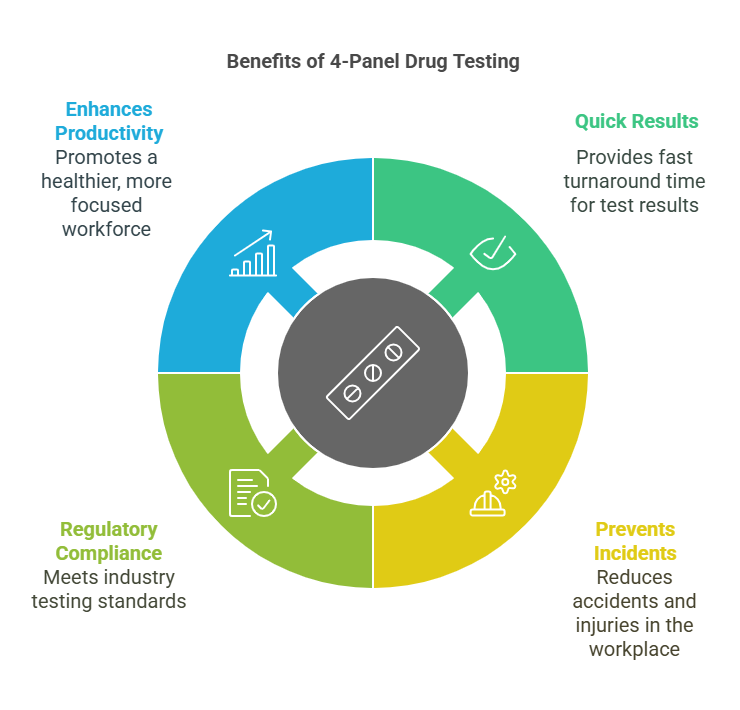
1. Quick and Efficient Results
A major advantage of the 4-panel drug test is the quick turnaround time. With modern testing methods, results can often be delivered within a few hours to a few days, depending on the sample type used. This is particularly valuable in industries where employers need to act swiftly when they suspect substance abuse.
2. Prevention of Drug-Related Incidents
One of the primary reasons for implementing drug testing in the workplace is to prevent accidents and injuries. By identifying employees under the influence of substances, employers can mitigate the risks associated with impaired judgment, reduced reaction times, and overall lack of attention to safety protocols.
3. Compliance with Industry Regulations
Many industries, such as transportation and healthcare, require drug testing to comply with federal and state regulations. A 4-panel drug test meets the testing standards set by regulatory bodies such as the Department of Transportation (DOT) for drivers and operators of heavy machinery.
4. Employee Health and Productivity
Drug testing helps maintain a healthier, more productive workforce by discouraging drug use. Employees who are subject to regular testing are less likely to engage in substance abuse, knowing they will be tested for common drugs. This results in higher levels of focus and performance in the workplace.
Limitations of 4 Panel Drug Screening
1. Limited Scope
While the 4-panel test screens for four common substances, it does not cover all drugs that can impair work performance, such as benzodiazepines, alcohol, or synthetic drugs. This limited scope means that a more comprehensive test may be necessary in some cases.
2. False Positives and False Negatives
False positives and false negatives can occur in drug testing, leading to inaccurate results. For instance, some medications can cause a false positive for marijuana, while a false negative might occur if the drug has already left the individual’s system. Employers need to follow up with confirmatory tests to ensure accuracy.
3. Inability to Detect Recent Usage
The ability to detect recent drug use depends on the sample type. For example, urine tests can detect drug use within the past few days, while hair tests may not show recent drug use. In industries where recent drug use is a concern, other forms of testing might be more appropriate.
Use Cases for 4 Panel Drug Testing
The 4-panel drug test is widely used in various workplace situations, including:
- Pre-Employment Screening: Ensuring new hires are drug-free and fit to work safely.
- Random Drug Testing: Implementing random tests as part of a company’s ongoing drug-free workplace policy.
- Post-Incident Testing: Testing employees after an accident to determine if drug use contributed to the incident.
- Return-to-Work Testing: Testing employees returning from a leave of absence due to drug-related issues or after rehabilitation.
ExactBackgroundChecks Services
ExactBackgroundChecks offers professional 4-panel drug screening services for businesses of all sizes. The company ensures accurate, timely results and guarantees confidentiality. By working with ExactBackgroundChecks, employers can meet regulatory requirements and maintain a safe and drug-free workplace.
Legal Aspects of 4 Panel Drug Testing
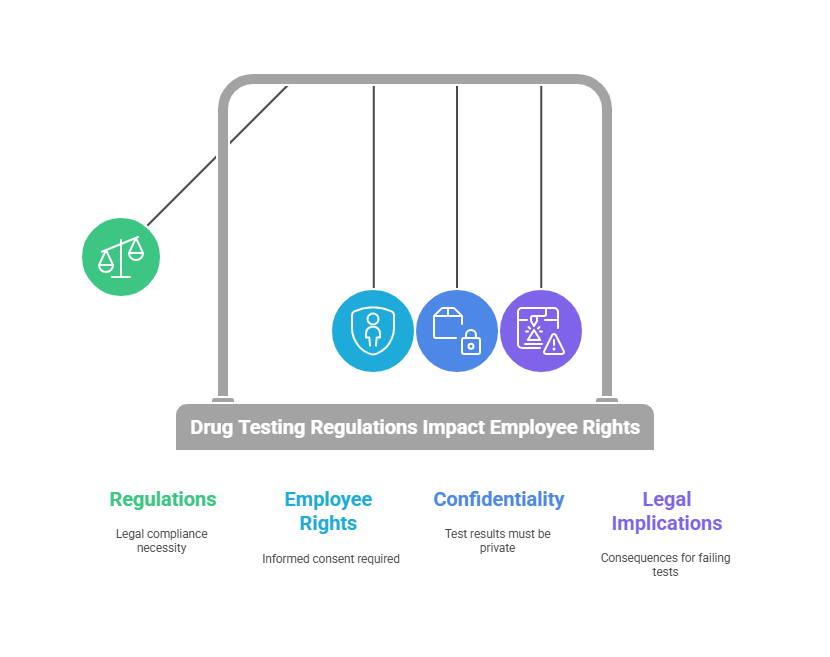
1. Drug Testing Regulations
In the U.S., drug testing is regulated by several federal and state laws, including the Drug-Free Workplace Act and specific regulations for industries like transportation and aviation. Employers must comply with these laws to ensure their drug testing policies are legally sound. Testing protocols, consent forms, and the handling of results must adhere to strict guidelines.
2. Employee Rights
Employees have rights regarding drug testing, including the right to be informed of the testing procedure, the right to consent, and the right to contest results. In some states, employees can refuse a drug test, but doing so may result in disciplinary action or termination. Employers must ensure they do not violate an employee’s rights during the testing process.
3. Confidentiality and Privacy
Employers must handle test results with care and in accordance with laws like HIPAA to protect employees’ medical privacy. Results must be kept confidential, and only authorized personnel should have access to this sensitive information.
4. Legal Implications of Failing a Drug Test
If an employee fails a drug test, the consequences vary depending on company policy and the nature of the job. Common outcomes include disciplinary action, retesting, suspension, or termination. In some cases, employees may be referred to rehabilitation programs or offered the opportunity for a second chance.
Frequently Asked Questions (FAQs)
What is a 4-panel drug screening?
It's a drug test that screens for four common substances: marijuana (THC), cocaine, amphetamines, and opiates.
How does a 4-panel drug test work?
It involves collecting a biological sample (urine, saliva, hair, or blood), analyzing it for the presence of the four substances, and delivering the results.
Why do employers choose 4-panel drug screening?
It's cost-effective, targets commonly abused substances, and provides relatively quick results, balancing thoroughness with efficiency.
What are the benefits and limitations of 4-panel drug screening for employers?
Benefits include quick results, prevention of drug-related incidents, compliance with regulations, and maintaining employee health and productivity. Limitations include a limited scope, potential for false positives/negatives, and varying detection windows.
What legal aspects should employers consider when conducting 4-panel drug testing?
Employers must adhere to drug testing regulations, respect employee rights, ensure confidentiality and privacy, and understand the legal implications of a failed drug test.
What is a 4-panel drug screening?
It's a drug test that screens for four common substances: marijuana (THC), cocaine, amphetamines, and opiates.
How does a 4-panel drug test work?
It involves collecting a biological sample (urine, saliva, hair, or blood), analyzing it for the presence of the four substances, and delivering the results.
Why do employers choose 4-panel drug screening?
It's cost-effective, targets commonly abused substances, and provides relatively quick results, balancing thoroughness with efficiency.
What are the benefits and limitations of 4-panel drug screening for employers?
Benefits include quick results, prevention of drug-related incidents, compliance with regulations, and maintaining employee health and productivity. Limitations include a limited scope, potential for false positives/negatives, and varying detection windows.
What legal aspects should employers consider when conducting 4-panel drug testing?
Employers must adhere to drug testing regulations, respect employee rights, ensure confidentiality and privacy, and understand the legal implications of a failed drug test.
Conclusion
4-panel drug screening is an essential tool for employers to maintain a safe, productive, and compliant workplace. By screening for commonly abused substances such as marijuana, cocaine, amphetamines, and opiates, employers can identify and address potential issues before they become safety concerns. However, employers must balance the benefits of 4-panel testing with its limitations, ensuring they adhere to legal requirements and respect employee rights.
By partnering with a reliable service like ExactBackgroundChecks, employers can ensure accurate, timely, and confidential drug testing that protects their workforce and meets regulatory standards.
